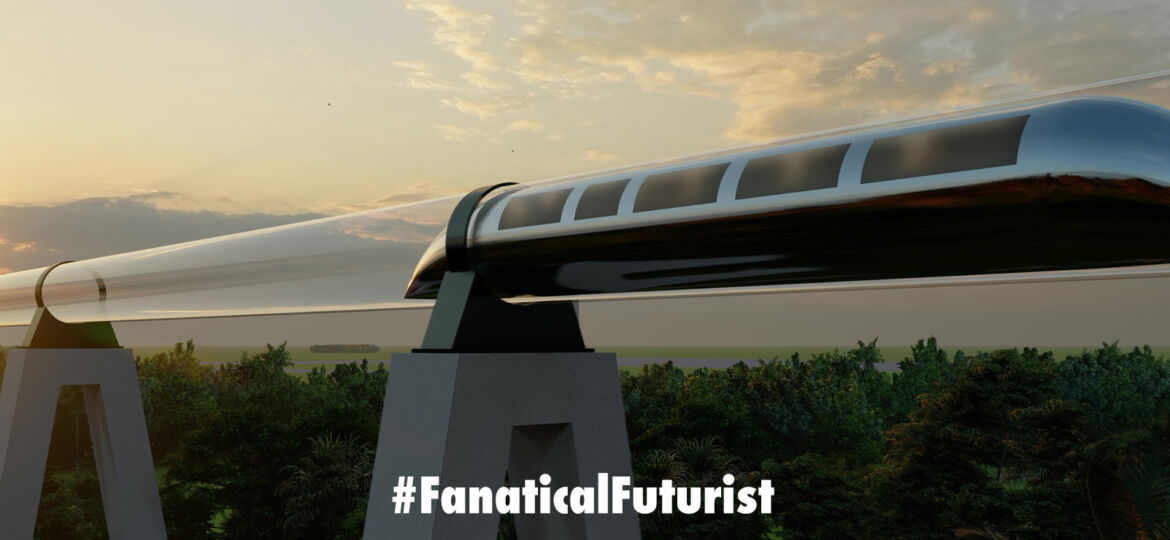
WHY THIS MATTERS IN BRIEF
New technologies and innovations follow a common pattern, first they’re built, then they’re tested, then they’re regulated and commercialised. This new test moves hyperloops closer to becoming a commercial reality.
 Love the Exponential Future? Join our XPotential Community, future proof yourself with courses from XPotential University, connect, watch a keynote, or browse my blog.
Love the Exponential Future? Join our XPotential Community, future proof yourself with courses from XPotential University, connect, watch a keynote, or browse my blog.
The future of transportation, or more to the point “mobility,” looks set to be rife with autonomous electric vehicles, that range from aircraft, boats, cars, cargo ships, and flying taxis, to semi-trucks, and vehicles that travel at amazing speeds – like the Mach 1 and Mach 3 Hyperloops, hypersonic and supersonic aircraft, and rockets that can transport you from one side of the planet at Mach 25 and above.
Now, following on from their last successful speed trial where their Hyperloop hit 192mph, or 387km/h, and in an attempt to realise this future reality Virgin Hyperloop, who envision connecting cities together with their very own super fast Hyperloop “train-in-a-vacuum-tunnel” concept, have announced their latest accomplishment – their first passengers who travelled in a comfy levitating pod at speeds of up to 100mph on the company’s 500 meter long test track in Nevada, Texas.
See the test run and the joy on their faces
It’s a landmark moment for the experimental transportation technology, even though it was only on a short test track, because these first ever human trials of a hyperloop system follow hundreds of unmanned test runs and bode well for their ability to one day safely transport people at speeds of over 750mph, or 1,200km/h.
Proving that Hyperloops are a safe way for humans to travel is obviously a top priority for the Virgin Hyperloop team, and Sunday was an important step towards that goal.
The pod they used was a new prototype called the XP-2, which had been adapted to comfortably carry two human passengers.
Virgin Hyperloop co-founder and CTO Josh Giegel and Director of Passenger Experience Sara Luchian were the first humans to hop aboard, with the test run taking them to speeds of 107mph, or 172km/h, according to the BBC.
“Hyperloop is about so much more than the technology. It’s about what it enables,” said Luchian. “To me, the passenger experience ties it all together. And what better way to design the future than to actually experience it first-hand?”
According to Virgin Hyperloop, the XP-2 pod is fitted with many of the same safety systems that would feature on the final commercial version of the hyperloop, and while demonstrating these safety systems is an important milestone there’s still a long way to before they are performed at the speed of sound. The company has previously said it hopes to achieve safety certification by 2025, and have a commercial service up and running by 2030, or preferably before.
“When we started in a garage over six years ago, the goal was simple – to transform the way people move,” said Giegel. “Today, we took one giant leap toward that ultimate dream, not only for me, but for all of us who are looking towards a moonshot right here on Earth.”
Source: Virgin Hyperloop

















[…] expensive to build and progress can be slowed down by bureaucracy. Hyperloop One, formerly Virgin Hyperloop, shut down last year as it was strapped for cash, as reported by Bloomberg. Fortunately, CASIC […]